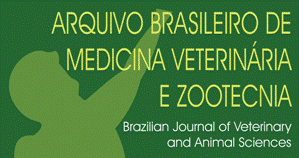ABSTRACT
The aim was to determine the efficiency of use of water and nitrogen for forage production and goat-milk production on an irrigated Tanzania Guineagrass (Panicum maximum cv. Tanzânia) pasture subjected to different management practices. The management levels tested were combinations among nitrogen fertilization levels and post-grazing residual heights (ResH): Intensive (ResH = 33.0cm and 600.0kg N/ha.year-1); Moderate (ResH = 47.0cm and 300.0kg N/ha.year-1); Light (ResH = 47cm and 0kg N/ha.year-1); and Conventional (ResH = 33cm and 0kg N/ha year-1). The efficiency of water use for forage production was higher in intensive and Moderate management. The Conventional management was recommended only for forage production since there is no nitrogen input available because this result was similar to Intensive management in water efficiency. The efficiency of water use to produce goat milk was higher in Intensive management. Moderate management presented higher efficiency of nitrogen to produce forage. On the other hand, Intensive management was more efficient using nitrogen in goat milk production. The amount of water needed to produce one liter of goat milk varied from 893.20 to 3,933.50L. In the moderate management, up to 121.48kg forage and 21.56kg of milk were produced for every kilogram of N utilized. Intensive management is advantageous for water use efficiency as well nitrogen efficiency to produce goat milk in cultivated pasture.
Keywords:
fertilization levels; forage dry matter; Tanzania Guinea Grass; residual height
